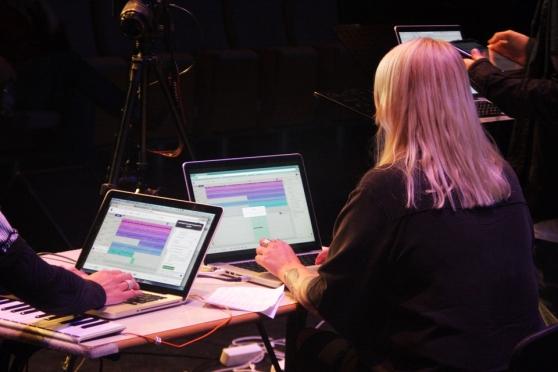
The Soundtrap app is an excellent tool for introducing students to music production.
Whether it’s recording a live instrument, working with prerecorded sounds, sound designing, DJing or remixing, music production is a great way to engage secondary school students in learning.
The power of music production in the classroom lies in its interdisciplinary nature. It develops digital literacy while also providing an opportunity to explore culture and identity.
When a teacher introduces music production, each student will have a different access point to engage in a lesson or learn a skill while showcasing their strengths. There is no specific prerequisite skill required to begin. Students can work independently or participate in a group project.
Because there are no strict rights or wrongs, the pursuit of music production can be a therapeutic and empowering process for students.
In a subject like social studies, music production can help students understand cultural diffusion and how culture spreads. One of my favorite activities was having students listen to Marc Anthony’s “Vivir Mi Vida” (a song all my students in East Harlem know, probably from their parents) and then Khaled’s “C’est La Vie.” They can instantly make the connection that the pieces of music are similar but are usually shocked to find out the Marc Anthony song was really a remake, translated from French/Arabic to Spanish and reenvisioned in a modern salsa format.
There are endless connections between math and music production. One of my college friends, a math major and music engineer, found that a talent for understanding ratios translated to helping him use compression. Compression is a tool used in all music programs on vocals and other sounds to get a more even sound and level out peaks. By testing different mathematical ratios, one can add combinations into a compressor to see how it alters a sound.
An app called Soundtrap, made by Spotify, is my personal favorite tool for introducing students to music production. A free version of the digital audio workstation (DAW) can be used in some capacity on any type of device, which makes it much easier for students to continue working on music at home or while traveling. Collaboration on Soundtrap is extremely fluid; students can work on the same project at the same time whether in person or in different locations if they are connected to the internet.
Soundtrap has a free online version with accessible drum and melodic sounds that can be layered over students’ audio recordings. Students studying poetry, for example, could record a poem using Soundtrap and then add layers of musical background to create a complete composition.
Garageband is another popular program that is great to use as an introduction to music production. The plus side is that it comes free on any Mac device and easily integrates into the professional Apple DAW Logic Pro for more advanced mixing techniques. The downside is that Garageband will not work on non-Mac devices.
In the end, it doesn’t matter what platform you use because the framework and product can be replicated to any DAW.
Soundtrap and Garageband can also be used by students to create podcasts.
Ted Ganung is a history teacher at the Renaissance School of the Arts, a middle school in East Harlem.